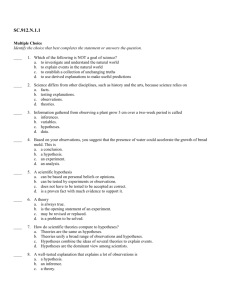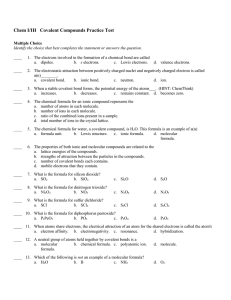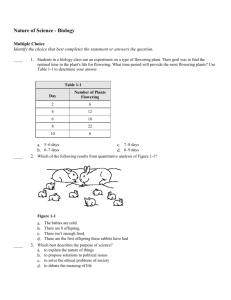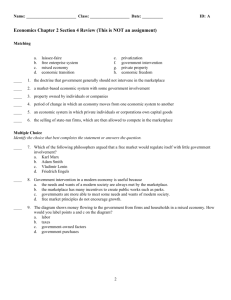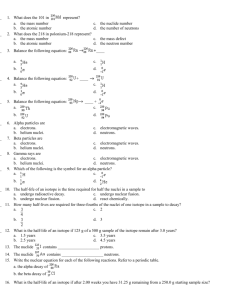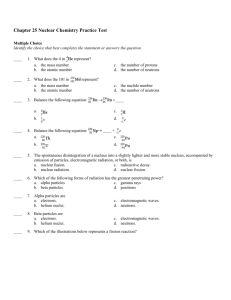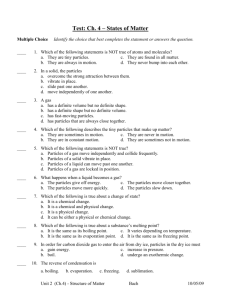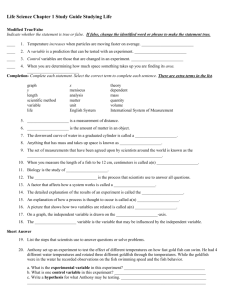Chapter 6 Practice Test
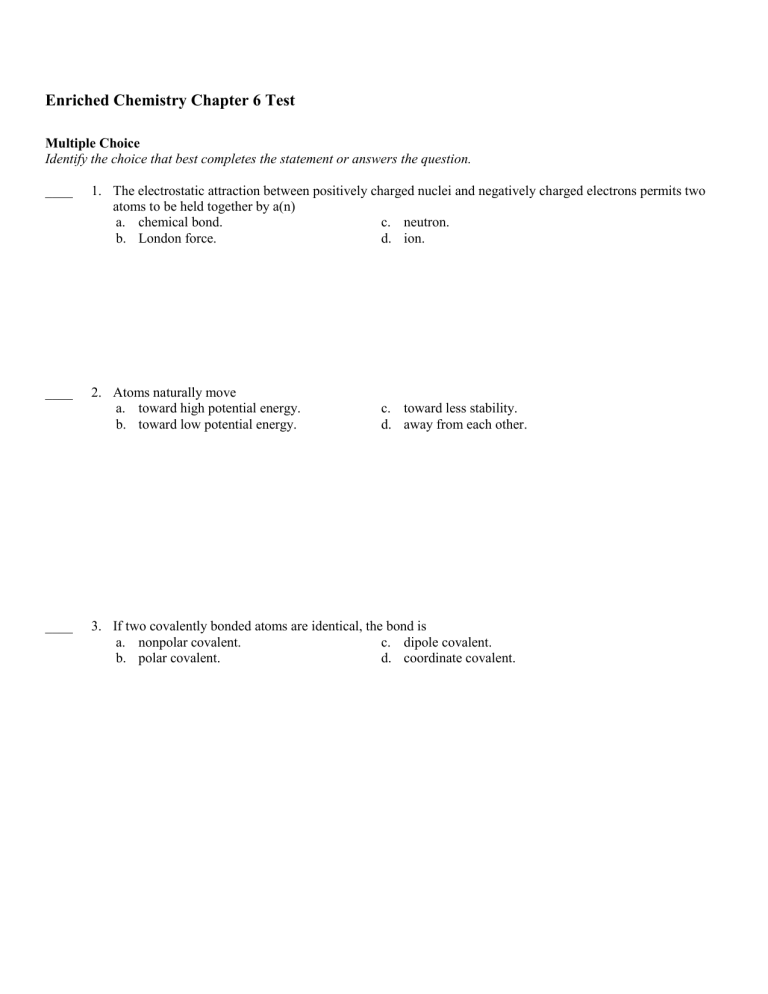
Enriched Chemistry Chapter 6 Test
Multiple Choice
Identify the choice that best completes the statement or answers the question.
____ 1. The electrostatic attraction between positively charged nuclei and negatively charged electrons permits two atoms to be held together by a(n) a. chemical bond. b. London force. c. neutron. d. ion.
____ 2. Atoms naturally move a. toward high potential energy. b. toward low potential energy. c. toward less stability. d. away from each other.
____ 3. If two covalently bonded atoms are identical, the bond is a. nonpolar covalent. b. polar covalent. c. dipole covalent. d. coordinate covalent.
____ 4. Nonpolar covalent bonds are not common because a. one atom usually attracts electrons more strongly than the other. b. ions always form when atoms join. c. the electrons usually remain equally distant from both atoms. d. dipoles are rare in nature.
____ 5. The greater the electronegativity difference between two bonded atoms, the greater the percentage of ____ in the bond. a. ionic character b. covalent character c. metallic character d. electron sharing
____ 6. Which of the following shows the types and numbers of atoms joined in a single molecule of a molecular compound? a. molecular formula b. potential energy diagram c. covalent bond d. ionic bond
____ 7. When a stable covalent bond forms, the potential energy of the atoms a. increases. b. decreases. c. remains constant. d. becomes zero.
____ 8. Bond length is the average distance between two bonded atoms a. at which potential energy is at a minimum. b. at which kinetic energy is at a maximum. c. at which potential energy is at a maximum. d. and equal to one-half the diameter of the electron cloud.
____ 9. In drawing a Lewis structure, the central atom is generally the a. atom with the greatest mass. b. atom with the highest atomic number. c. atom with the fewest electrons. d. least electronegative atom.
____ 10. After drawing a Lewis structure, one should a. determine the number of each type of atom in the molecule. b. add unshared pairs of electrons around nonmetal atoms. c. confirm that the total number of valence electrons used equals the number available. d. determine the electronegativity of each atom.
____ 11. What is placed between a molecule's resonance structures to indicate resonance? a. double-headed arrow b. single-headed arrow c. series of dots d. Lewis structure
____ 12. In a crystal, the electrons of adjacent ions a. repel each other. b. attract each other.
____ 13. The forces of attraction between molecules in a molecular compound are a. stronger than the forces among formula units in ionic bonding. b. weaker than the forces among formula units in ionic bonding. c. approximately equal to the forces among formula units in ionic bonding. d. zero.
____ 14. How many extra electrons are in the Lewis structure of the phosphate ion, PO
4
3– ? a. 0 c. 3 b. 2 d. 4 c. neutralize each other. d. have no effect on each other.
____ 15. Compared with nonmetals, the number of valence electrons in metals is generally a. smaller. b. greater. c. about the same. d. almost triple.
____ 16. The shiny appearance of a metal is most closely related to the metal's a. highly mobile valence electrons. c. brittle crystalline structure.
b. covalent bonds. d. positive ions.
Short Answer
1. Please draw dot diagrams for the following elements: Na, O, At, Ca, C
2. Please draw Lewis structure for the following compounds: CH
4
, NH
3
, NCl
3
, ClO
3
, H
2
CO, CO
2
Essay
1. Please name the three types of chemical bonds covered in this chapter. For each of these describe how the valence electrons are involved. (6 points)
Enriched Chemistry Chapter 6 Test
Answer Section
MULTIPLE CHOICE
1. ANS: A PTS: 1 DIF: I
REF: cc13bc5f-f97e-11de-9c72-001185f0d2ea
STA: PS.9.7 | PS.12.1
2. ANS: B PTS: 1 DIF: I
REF: cc161ebc-f97e-11de-9c72-001185f0d2ea
STA: PS.9.7 | PS.12.1
3. ANS: A PTS: 1 DIF: I
REF: cc18a829-f97e-11de-9c72-001185f0d2ea
STA: PS.9.7 | PS.12.1
4. ANS: A PTS: 1 DIF: I
REF: cc220a8d-f97e-11de-9c72-001185f0d2ea
STA: PS.9.7 | PS.12.1
5. ANS: A PTS: 1 DIF: I
REF: cc22319d-f97e-11de-9c72-001185f0d2ea
STA: PS.9.7 | PS.12.1
6. ANS: A PTS: 1 DIF: I
REF: cc2df65e-f97e-11de-9c72-001185f0d2ea
STA: PS.9.7 | PS.12.1
7. ANS: B PTS: 1 DIF: I
REF: cc3058bb-f97e-11de-9c72-001185f0d2ea
STA: PS.9.7 | PS.12.1
8. ANS: A PTS: 1 DIF: I
REF: cc32bb18-f97e-11de-9c72-001185f0d2ea
STA: PS.9.7 | PS.12.1
9. ANS: D PTS: 1 DIF: I
REF: cc3c448c-f97e-11de-9c72-001185f0d2ea
STA: PS.9.7 | PS.12.1
10. ANS: C PTS: 1 DIF: I
REF: cc3ea6e9-f97e-11de-9c72-001185f0d2ea
STA: PS.9.7 | PS.12.1
11. ANS: A PTS: 1 DIF: I
REF: cc45ce00-f97e-11de-9c72-001185f0d2ea
STA: PS.9.7 | PS.12.1
12. ANS: A PTS: 1 DIF: I
REF: cc51e0e1-f97e-11de-9c72-001185f0d2ea
STA: PS.9.7 | PS.12.1
13. ANS: B PTS: 1 DIF: I
REF: cc5b4345-f97e-11de-9c72-001185f0d2ea
STA: PS.9.7 | PS.12.1
14. ANS: C PTS: 1 DIF: III
REF: cc626a5c-f97e-11de-9c72-001185f0d2ea
STA: PS.9.7 | PS.12.1
OBJ: 1
OBJ: 2
OBJ: 2
OBJ: 4
OBJ: 4
OBJ: 5
OBJ: 1
OBJ: 2
OBJ: 3
OBJ: 4
OBJ: 4
OBJ: 2
OBJ: 4
OBJ: 4
15. ANS: A PTS: 1 DIF: I
REF: cc64f3c9-f97e-11de-9c72-001185f0d2ea
STA: PS.9.7 | PS.12.1
16. ANS: A PTS: 1 DIF: I
REF: cc6bf3d0-f97e-11de-9c72-001185f0d2ea
STA: PS.9.7 | PS.12.1
SHORT ANSWER
1. ANS: varies
PTS: 1
2. ANS: varies
PTS: 1
ESSAY
1. ANS: varies
PTS: 1
OBJ: 1
OBJ: 2
